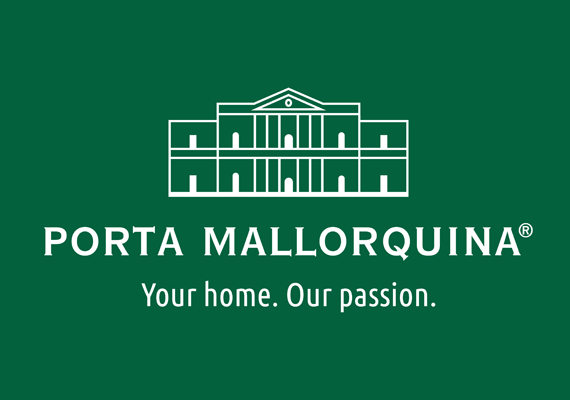Mallorca-lovers have long appreciated the appeal of Palma. It comes as no surprise as the city has everything: the climate, the beautiful and simultaneously modern Old Town, excellent dining and shopping options, art and culture, as well as a long beach and beautiful harbour on the doorstep. Palma has it all and is not only perfect for vacations, but also to live and work in. Known as an especially trendy neighbourhood is Santa Catalina with its charming small, former fisherman’s cottages and many bars and restaurants from around the world. Additionally, the two suburban areas near the sea, Portixol and El Molinar, are among the top favourites, and Portixol has already been compared with primary Saint Tropez. But the city is evolving and continues to grow with new neighbourhoods showing their qualities.
The Old Town
Currently one of the big favourites: the Casco Antiguo is as popular as ever, shown alone by the fact that more than a dozen applications for new Boutique Hotels in old buildings in the Old Town are in commission. Specifically, the area around the Cathedral Sa Calatrava is changing. Earlier, the former “barrio chino “had a reputation as being dangerous with a prevalence of drugs and prostitution, a very different story from today: alternative bars, (vegetarian) outdoor dining, new boutiques and even a Designer Hotel, La Calatrava lure an especially young, cosmopolitan crowd. Everything here is in upheaval, constantly changing, and the mood reminiscent of the Berlin Prenzlauer Mountain. While some old houses in the former artisan district behind the Cathedral still have plaster peeling off them, one of the living quarters at the Parc de la Mar, facing the sea and city beach is one of the most exclusive and quietest addresses of the city. For luxury apartments with large roof terraces here the land rates are already at 6,000 € / sqm.

Palma Old Town – inner courtyard
Popular places and streets
Highly sought after squares and streets also include the high up Plaça Santa Eulalia and the adjacent Carrer Colón. The Old Town district of Sant Francesc is full of life, and the small Plaza by church of Santa Eulalia has a choice of three cafes for a drink. Right next to the town hall is Plaza Cort, with one of the Old Town’s most beautiful and exclusive hotels, the Hotel Cort. The intersecting Carrer Colón boasts well renovated apartments in old city palaces and has many fine boutiques and small delicatessens strung together. An absolute eye-catcher is the “Can Forteza-Rey “building in the style of the Catalan Modernismo near the Plaça Major.

Can Forteza-Rey – Palma – Picture: Maria Rosa Ferre
If you turn from the upper town, you reach the historic lower town below Plaça Major. The Ramblas resemble the much larger Ramblas of Barcelona and have a similar feel with flower stalls, and also include the most desirable neighbourhoods. Here it is a little quieter than on the nearby Jaume III, which remains in the hands of the old Mallorcan Nobility. The Ramblas are home to significant cultural buildings, such as the Teatro Principal and La Misericordia.
Branching to the left and right of the boulevard you find interesting alleyways, especially the “Pilgrimage for Gourmets ” where you find the restaurant ‘Simply Fosh’ located in the barely known hotel Convent de la Missio in a beautiful monastery of the 17th-century, just around the corner. Anyone interested in Palma’s old town – upper or lower – can expect to enjoy a perfect mix of history, art, culture and exciting ambience with excellent gastronomy.

Belver Castle – landmark of Palma
Town locations
Districts that no longer belong to the centre are more often the most sought after, particularly the area around Palmas green lung, the Bellver Park, on which a city landmark, the Castillo de Bellver is perched. The area below the park was once where many rich inner city dwellers had their summer residences. One of the most expensive and most beautiful areas is Son Armadans which full of trees. Green, quiet, yet only a stone’s throw from the city centre, which is easily accessible from here on foot either by the heading to the trendy district of Santa Catalina or down to the port of Palma along the water (a stopover at the beach bar Darsena comes highly recommended).

El Jonquet close to Santa Catalina
Completely different and yet increasingly in demand are outlying areas such as Sa Teulera, which is behind Son Armadans, and the Son Dureta city foothills. Often the architecture on the land of the outskirts of a city leaves a lot to be desired, but not here, it offers a pleasant mix of single-family homes on the one hand and attractively designed apartment buildings on the other. All around are green areas, in the background you find the peninsula of Na Burgesa, the suburbs of Genova and nearby the outskirts Son Rapinya / Son Vida, and all are intersected by the Via Cintura highway, which is also handy for those working outside Palma. At the same time, the city centre is only 10 minutes away by car. Although lacking the trendy bars and nightlife, there are various shops and schools nearby. Better to buy than rent. The beauty of Palma’s is also the nevertheless manageable size of the city, as you can never be too far from the centre. Whatever area you choose, whether green and quiet or lively and in the centre, the competition for real estate for sale in Palma is high, because –as confirmed by the Times – “Concrete Gold” in such a fashionable seaside town can only rise in value.
